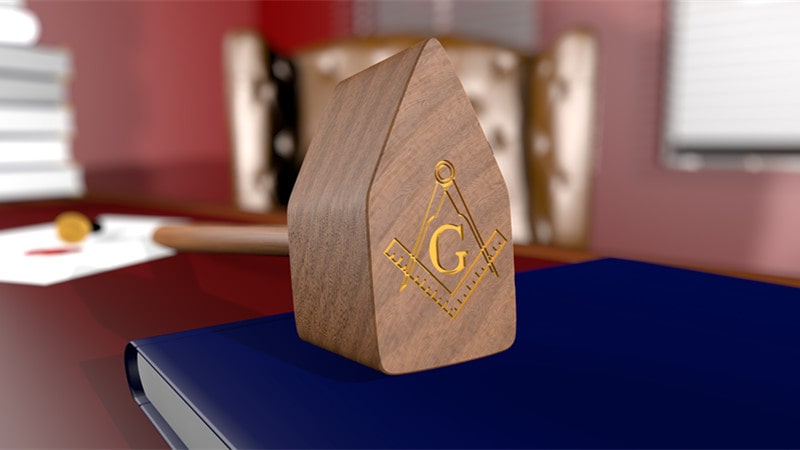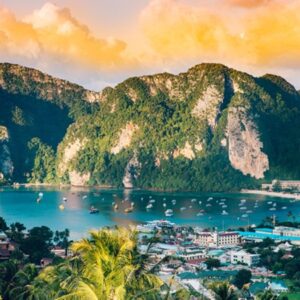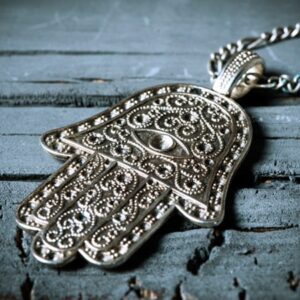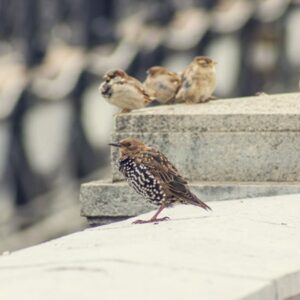
Did you know that the Freemasons are the largest secret society in the world? While the Freemasons have often been mistaken for a Christian organization, they have often encountered strong opposition from the Roman Catholic Church for flouting their conventions.
Freemasons have been at the core of numerous conspiracy theories. There are several allegations that they are a cult and that they control the world from the shadows. Seeing as they’re an incredibly private group and also sworn to secrecy, the full range of their operations isn’t known.
In most countries, Freemasons are split into 3 major degrees – entered apprentice, a fellow of the craft, and master mason. However, in the Scottish rite, there are 30 more degrees to becoming a Mason. Here’s all you need to know about Freemasonry ranks.
Who Are the Freemasons?
Freemasons are not governed by the authority of any religion. They are however concerned strongly with the spiritual domain of an individual’s life and accept people of all faiths and beliefs on equal terms. Having faith in the existence of a supernatural being and the immortal soul are the other prerequisites for joining, besides being a man.
Freemasons consider themselves as the architects of the world created by an elusive supreme being. They believe in enhancing their own views of the world by engaging in open dialogues and discussions with people holding different worldviews. The philosophy of Freemasonry connects morality, charity, and civil obedience to the law of the land.
To put it simply, freemasonry accepts good men with hopes of turning them into better men, better husbands, fathers, brothers, citizens, etc. but through a combination of guided and self-guided processes that vary from rite to rite.
Freemasonry consists of multiple fraternal organizations now present throughout the world as the result of the British conquest. It is a male-only fraternity that traces its origins back to the local fraternities and stonemasons in the late 14th century.
History
We don’t have a clear picture of the roots of freemasonry. By 1717, it was organized at a national level with the founding of the Grand Lodge, which oversaw an association of masonic lodges in England.
The most popular theory is that freemasonry began in medieval Europe as a guild for stonemasons who gathered regularly at lodges to discuss their trade. This evolved into a social organization with chivalric brotherhoods.
Freemasons have their own version of the history of their society tracing their ancestry all the way back to King Solomon.
Did you know the Freemasonry’s membership has included several notable figures in history starting as far back as George Washington, followed by Winston Churchill, Mozart, Franklin Roosevelt, Henry Ford, and even Colonel Sanders?
Freemasonry Today
Freemasonry is most popular today in the British Isles and England’s former colonial territories across the world. Estimates suggest that the strength of their membership ranges from somewhere between 2 million to over 6 million masons.
Affirmation that a higher being exists is still one of the mandatory joining requirements in all Masonic Lodges. They are a secular institution that offers social networking services and charitable donations.
Freemason lodges have frequently been criticized for being ‘elitist men’s clubs’ although there are separate lodges for women in the freemasonry today.
Degrees in Freemasonry
Most of the world’s lodges follow the standard 3-degree system – entered apprentice, a fellow of the craft, and master mason which is the highest degree a Freemason can receive. However, some lodges offer numerous degrees which usually fall under one of the 3 divisions. We will elaborate more on what these 3 mean later.
The New York rite has 9 degrees, the Swedish one has 10 and the Scottish rite has 33 degrees. The degrees are conferred by several controlling bodies in the Scottish Rite. A rite is a series of steps a recruit must complete to move up the ranks and are conferred by various masonic organizations with independent control. Every Grand Lodge has its own rite.
Masonic Lodges
The proceedings of all rites take place in Masonic Lodges. Each lodge is akin to an organ in Freemasonry. Meetings are held in the lodge to conduct formal business such as electing new members, appointing officers, reading reports, bills and annual accounts, and organizing social and charitable events.
The masonic lodge is the basic unit of Freemasonry. These lodges are controlled by a Grand Lodge, which takes authority for all lodges within its territory.
The United Grand Lodge of England is the world’s oldest grand lodge and has had a historical influence on the nuances of masonic lodges worldwide. It has no authority over any other grand lodges. While each grand lodge operates at its own discretion and will, they are required to maintain similar standards.
Complete List of Freemasonry Degrees
The number of Freemasonry degrees a recruit can acquire depends on the lodge they are part of. Some Masonic lodges and bodies such as the ones following the Scottish Rite offer several ‘append-ant’ degrees, which allow lateral movement in the Freemason ranks, not an upward movement.
This means they’re acquired alongside the three degrees that are ranked – Entered Apprentice, the Fellowcraft, and Master Mason. The additional degrees are meant to represent the continued learning and pursuit of honor of a Mason in his rank.
The additional 30 degrees can be considered as honorary titles. They are awarded based on merit and ability to masons who have shown good character and maintained significant participation within the order. Master masons are the only rank that has to undertake stringent examinations and wait for long periods to be awarded more degrees.
Let’s look at the 3 standard degrees as per the widely accepted masonic rite and what each signifies:
Entered Apprentice
This is the first ranking recruits are awarded when they are inducted into the masonic order. At this stage, they will study the rituals, symbols, beliefs, and history of the Masonry. A recruit’s first task is to develop a more intimate relationship with the brotherhood by understanding its role and past.
Apprentices can also learn the language of Freemasonry, the topics that are taboo for lodge discussions (religion, politics, etc.) and the responsibilities involved in the lodge’s daily upkeep and agenda. The first degree is meant to represent the infant to the young adult stage of a new mason’s journey.
An apprentice, after a period of time, can be entrusted with some of the masonic secrets which they will be sworn not to share outside the brotherhood. Once they have proven their ability and character an entered apprentice can be considered for the second degree. You are technically not fully considered a mason until you have achieved the second degree.
You are greeted as ‘brother’ and have access to certain rights and knowledge. But you’re still a rough ashlar, representing a rough or unprepared stone in the process of being turned into a perfect ashlar.
The Fellowcraft
The first degree symbolizes the freshness of youth and intense learning that takes place in the formative years. The second degree is meant to represent a young adult reaching manhood.
It is called ‘Fellowcraft’ because members awarded with this degree then go on to seek masonry’s true profoundness by deepening their understanding of philosophy, wisdom, and their connection with God. They do this to achieve greatness in their craft and enter into spiritual manhood.
As part of the initiation, an apprentice will be invited to a ceremony in which he swears to undertake the new obligations and responsibilities that the degree comes with. He is also entrusted with secret knowledge such as passwords, handshakes, and signs that are limited to their new rank.
This stage is all about acquiring new knowledge to build character and putting it into practice for the betterment of society.
The Master Mason
Master Mason is the third and highest degree in the ritual of the lodge. The Master Mason degree symbolizes age and wisdom. It is important for a man who has reached this stage to reflect on his life and deeds and come to terms with God because of his mortality.
How a man lives and dies is the most important source of reflection and teachings of masonry. As an Entered Apprentice a member is taught of their role in the world and their duty to God. In the Fellowcraft degree, they dive deeper into moral science and the study of nature to foster an intellectually valid appreciation for God and his craftsmanship.
By the time a member is inducted into the rankings of Master Mason, he has been fully cemented into the rites of the lodge and masonry worldwide. His life is then committed to the fraternity and brotherhood as they are committed to him.
The everyday responsibility of a Master Mason is to ensure no taint is brought to the reputation of the masonry, through their own actions and the actions of those under them. Master Masons will also have financial responsibilities and take part in the upkeep of the lodge they belong to.
33 Degrees of Freemasonry Explained
Apart from the 3 main degrees or rather the 3 ranks of freemasonry that we discussed above, there are additional degrees. These additional or ‘append-ant’ degrees are conferred by organizations within the masonic family.
In the Scottish rite which is one of the append-ant bodies of Freemasonry, there are an additional 30 degrees of honor and education a Freemason can acquire to demonstrate their advancement in their education. They stand as symbols of honor to reward the member’s devotion to their pursuit of masonic enlightenment.
This means even a Master Mason’s journey doesn’t end with achieving the highest degree of Freemasonry. For further exposure to the principles of Freemasonry, a Master Mason can join the Scottish rite.
The idea of having more degrees embodies the main credo of the masonic organization, which is continuous self-improvement and learning.
#1. Ranked Degrees (Degrees 1 to 3)
The first three degrees which are the ranked degrees are the same as those offered by symbolic masonry. Degrees 4 to 32, which are the append-ant degrees that are part of the Scottish rite, are organized under 4 bodies.
#2. The Lodge of Perfection (Degrees 4 To 14)
The 4th through to the 14th degrees are sometimes called ineffable degrees because they involve investigating and contemplating the idea of God, which itself is an ineffable entity. Here is a list of the degrees they include:
- 4th Degree – Secret Master
- 5th Degree – Perfect Master
- 6th Degree – Intimate Secretary
- 7th Degree – Provost and Judge
- 8th Degree – Intendant of the Building
- 9th Degree – Elu of the Nine (or Elected Knight of the Nine)
- 10th Degree – Elu of the Fifteen (or Illustrious Elect of the Fifteen)
- 11th Degree – Elu of the Twelve (or Sublime Knight Elect of the Twelve)
- 12th Degree – Master Architect
- 13th Degree – Royal Arch of Solomon (or Knight of the Ninth Arch)
- 14th Degree – Perfect Elu (or Grand Elect, Perfect or Sublime Mason)
#3. Council of Princes of Jerusalem
The degrees under the Council of Princes of Jerusalem include deepening one’s understanding of history, specifically biblical events. The lessons these degrees try to convey are based on loyalty, duty, conviction, and truth.
- 15th Degree – Knights of the East (or Knights of the sword or Knights of the Eagle)
- 16th Degree – Prince of Jerusalem
#4. Chapter of Rose Croix
The degrees of the Chapter of Rose Croix intend to teach the importance of the quest for truth in our life and not repeating previous mistakes. The 18th degree also talks about the laws of universality and tolerance. They are also known as philosophical degrees because of their focus on religion, philosophy, ethics, and history. It’s a degree that comes with intellectual challenges.
- 17th Degree – Knights of the East and West
- 18th Degree – Knights of the Rose Croix (or de Heredom, Sovereign Prince Rose Croix, or Knight of the Pelican and Eagle)
#5. Consistory
These are known as the traditional and chivalric degrees. The traditional ones are numbers 19 to 29 and the chivalric ones are numbers 30 to 32.
- 19th Degree – Brothers of the Trail (or Grand Pontiff)
- 20th Degree – Master Ad Vitam (or Master of the Symbolic Lodge or Venerable Grand Master)
- 21st Degree – Patriarch Noachite (or Prussian Knight)
- 22nd Degree – Prince of Libanus (or King of the royal Axe)
- 23rd Degree – Knight of Valor (or Chief of the Tabernacle)
- 24th Degree – Brother of Forest (or Prince of the Tabernacle)
- 25th Degree – Master of Achievement (or Knight of the Brazen Serpent)
- 26th Degree – Friend and Brother Eternal (or Prince of Mercy or Scottish Trinitarian)
- 27th Degree – Knight of Jerusalem (or Knight of the Sun or Prince Adept or Commander of the Temple)
- 28th Degree – Knight of the Sun (or Knight commander of the Temple or Prince Adept)
- 29th Degree – Knight of St. Andrew
- 30th Degree – Grand Inspector (or Knight Kadosh or Knight of the White and Black Eagle)
- 31st Degree – My Brother’s Keeper (or Master of the Royal Secret)
- 32nd Degree – Sublime Prince of the Royal Secret (or Inspector General or Sovereign Grand Inspector General)
#6. The 33rd Degree of the Scottish Rite
The 33rd degree, the most prestigious and sparsely awarded degree is offered by an append-ant masonic organization known as the Ancient accepted Scottish rite, founded in 1801, South Carolina.
This degree is reserved only for those who have demonstrated an extraordinary commitment to the Scottish rite and with a plethora of personal and professional achievements alongside it. Also, to get the 33rd degree you need to achieve the rank of Master Mason which is the 3rd degree.
You also need to have had the 32nd degree (Sovereign Grand Inspector General) for 46 months or more and served as an honorary member of the Supreme Council. The 33rd Degree is only conferred on odd years at the annual meeting.
A famous historical example of someone who has attained the 33rd degree for his dedication to the community was United States President Gerald R. Ford in 1962. He diligently served the United States as a Congressman for 13 years.
The Bottom Line
A freemason’s degree represents their status in freemason ranks. These ranks are based on the value as well as the volume of knowledge a freemason has acquired during their study. However, there are many different masonic rites each with its own specific number of degrees.



